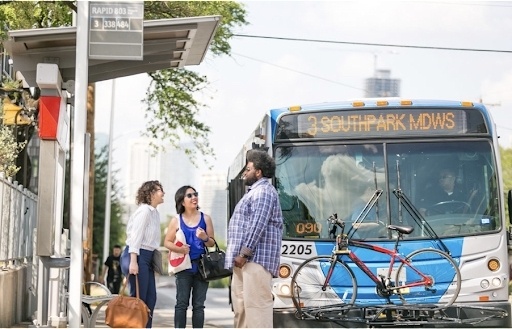The new plan will be presented to the Capital Metro board of directors March 28 and rolled out in the next few months, allowing customers to use a new Amp account to pay for fares within the Capital Metro app or use their Amp account smart card. The Amp branding is a way of paying tribute to Austin as the live music capital of the world.
Just like the existing system, customers can put credit in the card online or visit the 250 physical retail locations to load the card with cash.
Enrollment in the Amp card plan will offer “equifare,” or reduced cost of riding daily and monthly to those who qualify. Instead of paying up front for transit passes as they do in the current system, this allows the riders to pay as they go.
“We're really excited, maybe amped up to see how we can roll this out to the community,” said Brian Carter, Capital Metro’s chief experience and engagement officer.
The standard fare is $1.25 per ride, and the agency will have a new proposed equifare of $1 per ride. The cap for a day pass will be set to $2, meaning a rider will not be charged more than $2 per day, even if transit is ridden more than twice a day, Carter said.
“If once [a rider] spent $33 on transit fares, [the rider] would not spend any more that month for additional transit rides. But [the rider's] paying for that as [he/she] goes,” he said.
The lower rates are only for those who qualify and will remain unchanged for the general public, but the agency does recommend fare capping be applied across the board to any fare type, whether standard, equifare or reduced until they reach the cost of the day or month’s pass.
The new plan went into consideration when Capital Metro officials noticed their riders purchased single rides versus a daily or monthly pass. They also noticed the lowest income riders who depend on Capital Metro do not own a car, said Jacqueline Evans, director of diversity, equity and inclusion at Capital Metro, at the meeting.
“We want to assess usability and gather direct customer feedback as a part of that test. And that'll help us with understanding ways that we could improve the systems and ways that we can improve the registration process to get into the account,” Carter said.
Additionally, those who received a 50% discount in the current system for reduced fares will continue to receive benefits with the new Amp smart card, Carter said. Riders who qualify for both will receive the lower fare.
A rider is eligible if the household income is less than 200% of the federal poverty level or if they show proof of enrollment in special financial assistance programs, such as Medicaid, SNAP or CHIP.
A Title VI equity analysis to determine whether changes will result in any discrimination on minorities and those with low income levels is expected in July.
“If we learn something from Title VI, that it helps us to adapt the program, we might just take a little bit more time to roll it out,” Carter said.
Capital Metro plans to introduce the card through community events and gradually roll it out through community testing. Customers using existing apps will receive an upgrade in the coming months, and they can still put cash in the card as they can in the existing system or use their credit cards.
The app upgrades and the new Amp card will cost CapMetro $2,049,730, said Tawaun Cole, Capital Metro’s communication and public information officer, in an email.
The agency’s board approved the cost when they worked with a vendor to help build the app about two years ago, said Catherine Walker, chief financial and risk officer.





